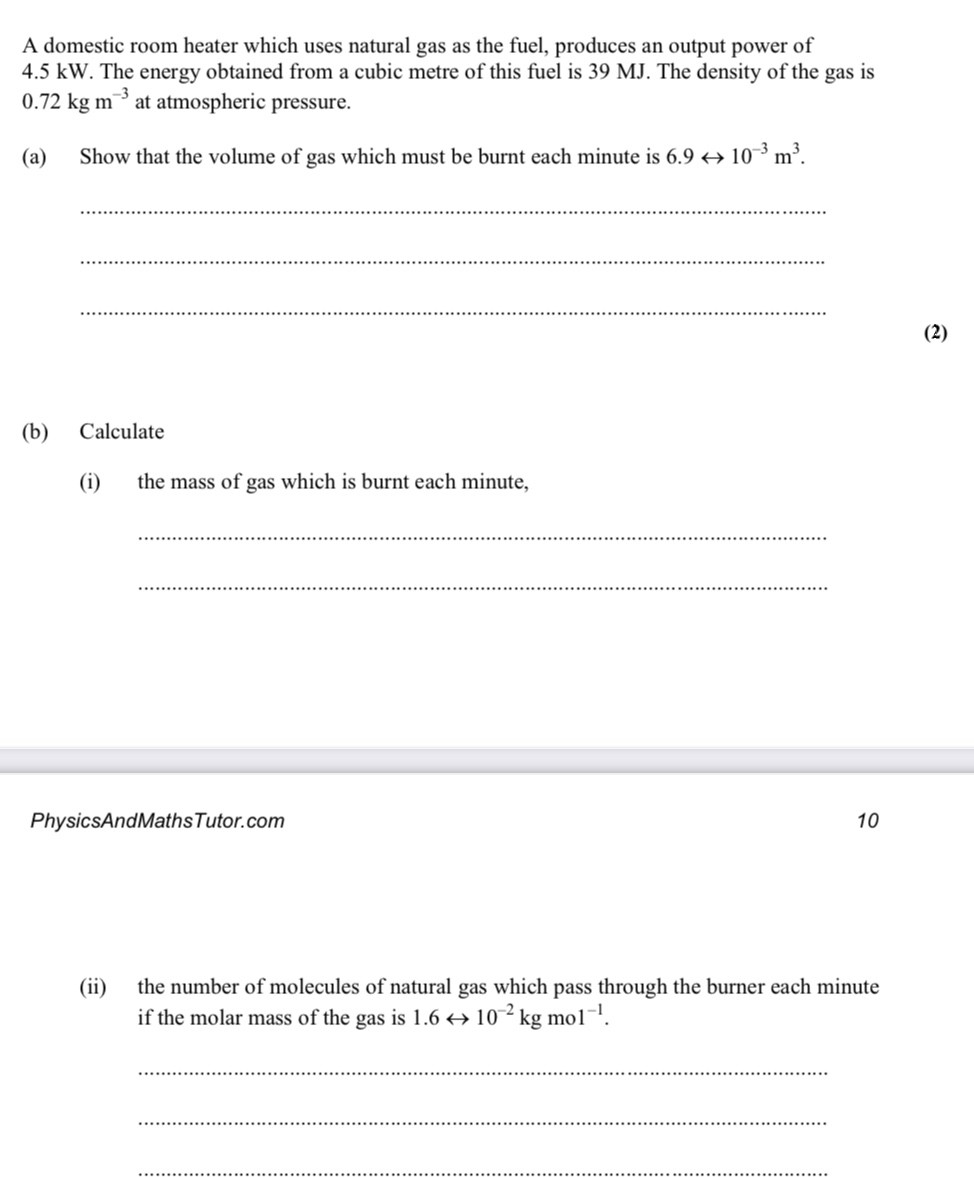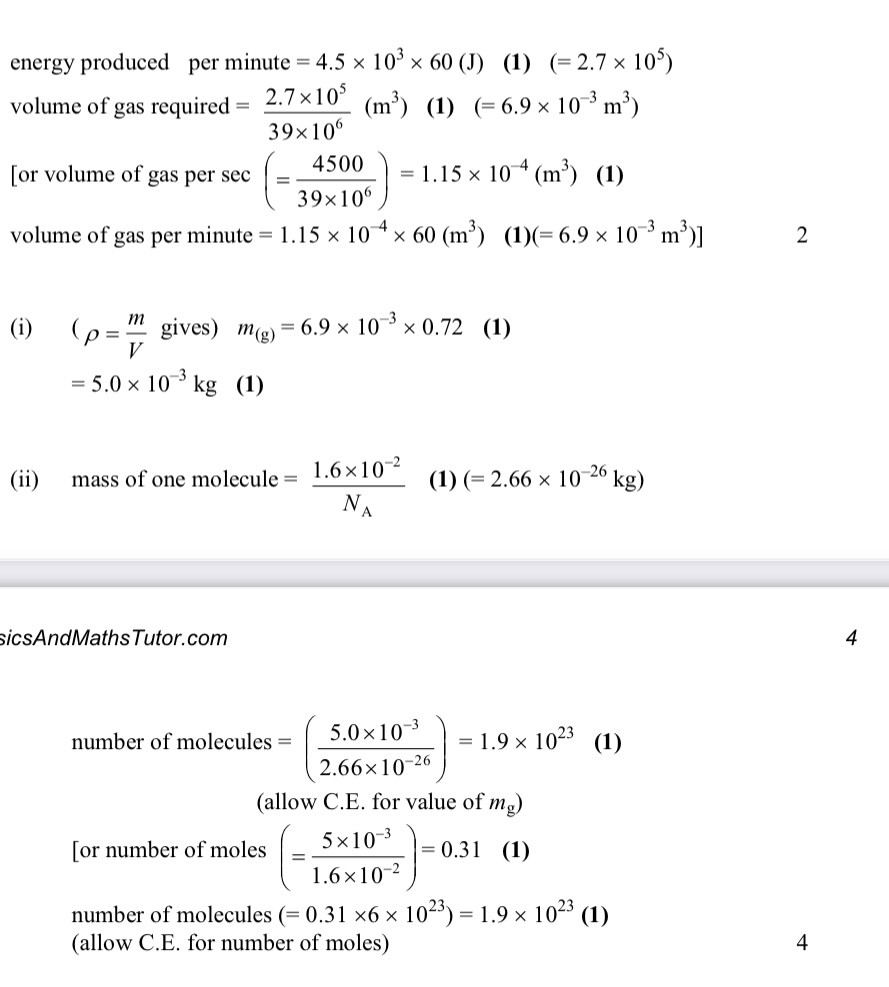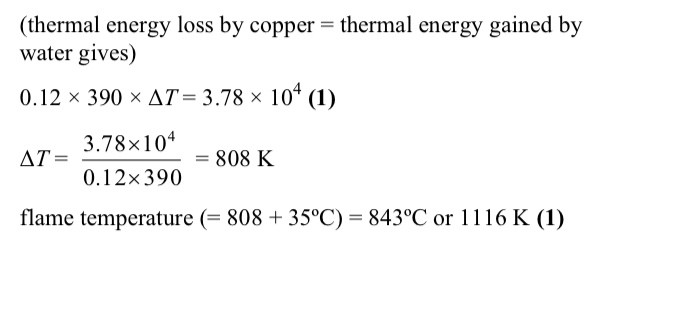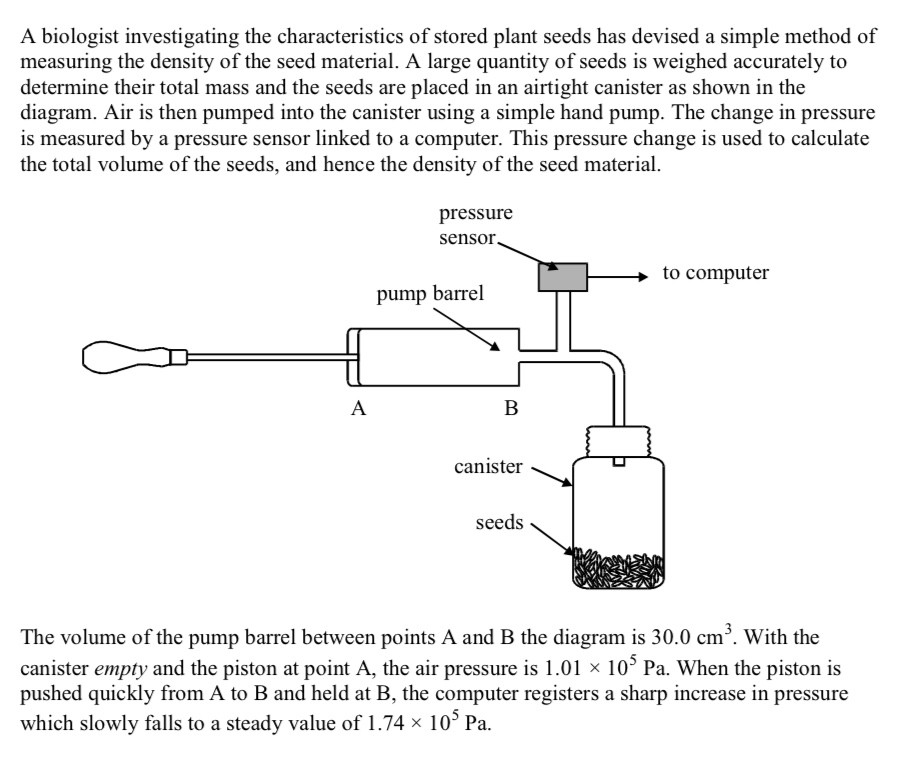-


-

Calculate the temperature reached the copper in the flame assuming no heat is lost when the copper is transferred
The temperature of the water rises from 15oC to 35oC.

-

When the lump of copper entered the water, some of the water was turned to steam
The specific latent heat of vaporisation of steam is 2.25MJ kg^-1 what further measurement would need to be made to calculate the energy used to produce the steam
Without further calculation describe how this further measurement should be used to obtain a more accurate value of the flame temperature
Measure the total mass of water, beaker and iron lump, to find the mass of water lost
Mass of water lost die to conversion to steam, m = mass measured after - initial mass,beaker and iron
Add the thermal energy due to steam produced to the thermal energy gained by the water
Calculated flame temperature would be greater
-
Thermal equilibrium
No net flow of thermal energy between two or more bodies at the same temp
-
What is meant by elastic collision
Kinetic energy is conserved
-

Explain why the pressure falls to a steady value after initially rising above it
Extremely quick compression gives little time for heat to leave canister
Air temperature rises
Heat is lost
Temp and pressu fall

